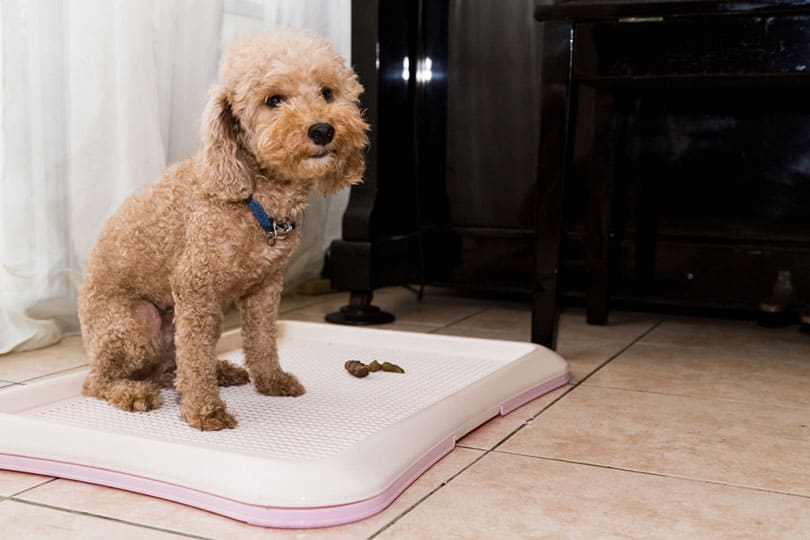How often your dog poops is not the most glamorous of topics, that’s for sure—but it’s a necessary one. Arming yourself with knowledge of what’s normal when it comes to your dog’s bathroom trips will help you be able to tell if something’s not quite right, so read on to find out how often dogs poop in a day, what’s normal, and what isn’t.
How Often Do Dogs Poop in a Day?
Healthy adult dogs typically poop once per day, but some go two or even three times. There’s no one-size-fits-all policy as to how much dogs should poop—it’s based more on what’s a normal frequency for your dog. It also depends on certain factors like what they’re eating and how much they’re exercising.
Puppies go to the bathroom a little more regularly than adult dogs, sometimes up five times daily or more. This is because puppies process food a lot faster than adult dogs. After all, their intestinal tract isn’t fully developed yet.
So, if you’ve noticed that your new puppy is a little poop machine and you’ve been worried, it’s normal for puppies to poop a lot as long as they seem otherwise healthy and the poop appears normal—no worms, strange colors like black, grey, yellow, or red, or foreign objects, for example.
As your puppy grows and develops, their pooping frequency should slow down. By the time your dog is in their senior years, they may poop much less often. Senior dogs may go to the bathroom once per day or, in some cases, may not poop at all on some days.

What Isn’t Normal?
Now that we know what’s normal, we should talk a little about what isn’t considered normal. If your dog’s pooping schedule suddenly and drastically changes, for example from going once a day to going several times a day, this change could be down to changes in your dog’s diet or it may signal a health issue. Keep an eye out for sudden changes or other symptoms, like abnormal coloring.
Abnormal poop colors in dogs are:
- Red: This may be caused by blood in the stool.
- Black: If your dog’s poop takes on a black, tarry color, it could signal bleeding in the upper part of the digestive tract.
- Yellow and/or gray: These colors point to potential issues with the gallbladder, liver, or pancreas.
- Green: Green poop may indicate that your dog is eating a lot of grass and may have an upset stomach.
- White/clear: This could be mucous caused by an inflammation, or it could be worms.
According to PetMD, you should contact a vet if you spot abnormal coloring in more than one bowel movement. You should also check for anything weird in your dog’s poop, like worms, foreign objects that have been swallowed, and clumps of hair that indicate your dog has been grooming itself too much.
Mucous in the stool is also abnormal, so if there’s a mucous coating or a trail left behind when you pick up the poop, it may point to diarrhea or inflammation in the bowel. If your dog shows these symptoms, seems more lethargic than usual, appears to be in pain or discomfort, or their symptoms don’t clear up on their own after 24 hours, it’s time to get them checked out by a vet.
Final Thoughts
No dog’s pooping schedules are 100% alike—where one may go once a day, another may go three times a day. As long as your dog seems happy and healthy and you don’t spot any abnormalities in their stools, they should be fine. If your dog’s stool is abnormal in some way, they’re showing discomfort, or your dog just isn’t quite itself, there may be an underlying health issue that needs veterinary treatment.
Featured Image Credit: Shutterstock














